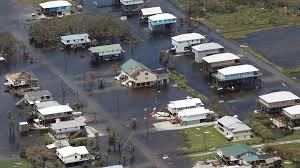How Is Climate Change Driving Up Home Insurance Premiums in the USA?

Homeowners across the United States are facing a harsh financial reality: home insurance premiums are skyrocketing, and one of the major culprits is climate change. From wildfires in California to hurricanes in Florida and flooding in Texas, climate-related disasters are becoming more frequent, intense, and expensive.
In this blog, we’ll explore:
- How climate change is impacting home insurance rates
- The states most affected by rising premiums
- Why some insurers are pulling out of high-risk areas
- What homeowners can do to protect their homes and finances
Let’s dive into how climate change is reshaping the insurance industry in the USA—and what it means for you.
🌪️ Climate Change & Home Insurance: What’s the Connection?
Climate change leads to extreme weather events that cause costly property damage. Insurance companies, who rely on past data to predict future risk, are struggling to keep up. The increasing unpredictability of natural disasters forces insurers to:
- Raise premiums
- Tighten coverage
- Or even withdraw from high-risk regions
According to The Guardian, home insurance premiums in disaster-prone states rose by 35–60% between 2021 and 2025.
🏠 Why Are Home Insurance Premiums Rising?
Several key factors are contributing to the rise in home insurance premiums in the USA:
1. Increased Frequency of Natural Disasters
Floods, wildfires, hurricanes, and tornadoes are happening more often and with greater intensity. This results in:
- More claims
- Higher payouts
- Increased losses for insurers
Example: California saw a record number of wildfires in 2023, causing over $12 billion in insured losses.
2. Cost of Rebuilding Is Rising
Climate change has also impacted the cost of materials and labor needed to rebuild homes. Supply chain disruptions and inflation are adding pressure to insurers’ pricing models.
3. Reinsurance Costs Are Climbing
Insurance companies purchase reinsurance to protect themselves from catastrophic losses. As reinsurers adjust to climate risks, they raise their prices—costs that are then passed on to homeowners.
🌎 States Most Affected by Climate-Driven Premium Increases
Homeowners in the following states are seeing the highest increases in insurance rates due to climate-related risks:
| State | Main Climate Risk | Average Premium Increase |
|---|---|---|
| California | Wildfires | +45% |
| Florida | Hurricanes, flooding | +55% |
| Texas | Hailstorms, flooding | +40% |
| Louisiana | Hurricanes, sea-level rise | +50% |
| Colorado | Wildfires, snow melt flooding | +38% |
🔗 Learn more from Barron’s: Why Insurance Costs Keep Rising
🚫 Why Are Insurers Leaving High-Risk Areas?
Some major insurers have stopped writing new homeowner policies in climate-sensitive states like California and Florida. Why?
- Unsustainable losses from frequent claims
- Inability to accurately model future risk
- Regulatory limits on rate increases
This trend leaves homeowners scrambling for coverage from smaller or state-backed providers—often at much higher rates.
According to Financial Times, climate change is now considered a systemic risk to the U.S. insurance industry.
🔒 How to Protect Your Home (and Your Wallet)
While you can’t stop climate change on your own, you can take steps to protect your home and manage insurance costs:
✅ 1. Invest in Home Hardening
- Install fire-resistant roofing and siding
- Use flood barriers and sump pumps
- Reinforce windows and doors against wind damage
Some insurers offer premium discounts for using climate-resistant building materials.
✅ 2. Shop for Insurance Regularly
Don’t stick with the same provider without comparing rates. Use platforms like:
✅ 3. Understand What’s Covered
Standard homeowner insurance often doesn’t cover flood or earthquake damage. You may need separate policies through:
- National Flood Insurance Program (NFIP)
- Private flood insurance providers
✅ 4. Ask About Climate Risk Ratings
Some insurers use advanced climate risk analytics. Ask your agent if your home has been rated for:
- Wildfire exposure
- Flood zone mapping
- Storm surge impact
🔎 What Does the Future Hold?
With climate-related disasters on the rise, the insurance industry is being forced to adapt:
- Parametric insurance models (e.g., payouts based on event triggers like wind speed or rainfall)
- AI-driven climate risk modeling
- Incentives for green, disaster-resistant construction
According to S&P Global, premiums will continue rising through 2030 unless risk mitigation measures are adopted at scale.
💡 Key Takeaways
- Climate change is a major driver of home insurance premium increases in the USA.
- States like California, Florida, and Texas are especially vulnerable due to wildfires, hurricanes, and floods.
- Insurers are raising rates, limiting coverage, or exiting markets entirely.
- Homeowners can protect themselves by investing in climate resilience and shopping around for coverage.
🔗 Outbound Resources
- National Association of Insurance Commissioners (NAIC)
- Federal Emergency Management Agency (FEMA)
- National Flood Insurance Program (NFIP)
- Consumer Reports: Rising Insurance Costs
🧠 Final Thought
As climate change accelerates, so do the risks for American homeowners—and the insurance industry is reacting accordingly. Understanding the connection between climate risk and insurance premiums is essential for anyone who owns a home in the USA.
Don’t wait until disaster strikes. Act now to reduce your risk, find the right coverage, and protect the biggest investment of your life—your home.




